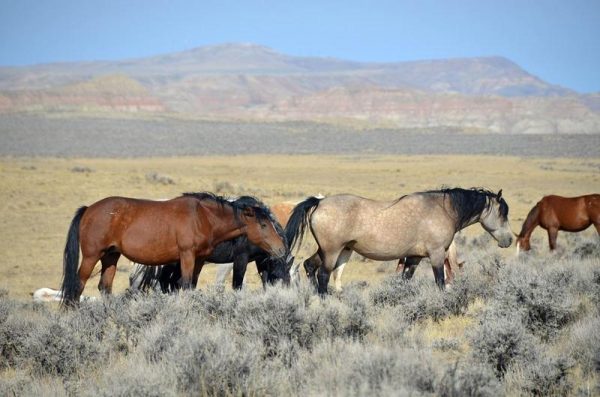MANAGING WILD HORSES is a hot topic in western US culture. The subject is sure to illicit polarized and emotional responses. One side of the table would like to see the American west as a haven. The other side considers the wild horse populations as wreaking havoc.
One extreme lobbies for the idea that the American Mustang is a remnant native to the western landscape. As such, the belief is that the wild equine population should be protected. The other extreme is the livestock industry lobby; some even seeking to eradicate wild horses from the range.
An excessive amount of research has gone into this article. Even a phone interview with a trainer involved with the Mustang Heritage Foundation. What is contained here is nowhere near exhaustive. However, it is important to understand that while this conversation is multi-faceted, logical conclusions can be drawn and sensible solutions can be achieved.
The BLM is planning a round-up in Wyoming on Oct. 17, 2019. You can find all the details for planned round-ups on the BLM Gathers and Removals page. On Oct. 30-31, in Washington DC, the BLM is meeting with the National Wild Horse and Burro Advisory Board to discuss management challenges. The BLM reports that wild horse and burro populations presently exceed target numbers by 61,000 animals.
Organizations associated with either extreme will paint a picture of semi-truth with bias toward their own agenda. Here are a few things of which we can be sure, in no particular order.
First, the BLM round-ups are necessary for conservation.
Second, the livestock, particularly beef, industry is rather important to consider.
Third, Conserving, not extirpating, the wild herds of American Mustangs is relevant.
All the controversy seems to stem from the third item above. Answering and implementing how and why the American Mustang is conserved presents challenges. Some groups have been darting mares with birth control.
Managing wild horses is no less necessary than managing wildlife populations. Left to themselves, they will destroy vast expanses of range. For instance, areas where the wild horses reside are subject to over-grazing. Horses, like most mammals, have top and bottom incisors. Consequently, these teeth allow horses to eat forage down to the dirt. Cattle do not have upper incisors, somewhat preventing cattle from over-grazing forage. Additionally, unchecked wild herds will become susceptible to overpopulation issues and eventually population self-destruction.
Alternatively, to much of the public eye, wild horses are just as iconic to western landscapes as are elk, deer and sheep. They have become an asset to manage and respectfully admire. Furthermore, it is that respectful admiration that should drive sensible conservation of wild animal populations, in general.
From a logic and sensibility perspective, this can be a rather simple issue. Hopefully there is harmony somewhere in between havoc and haven. Let us know if you have first-hand experience or involvement in wild horse issues.















